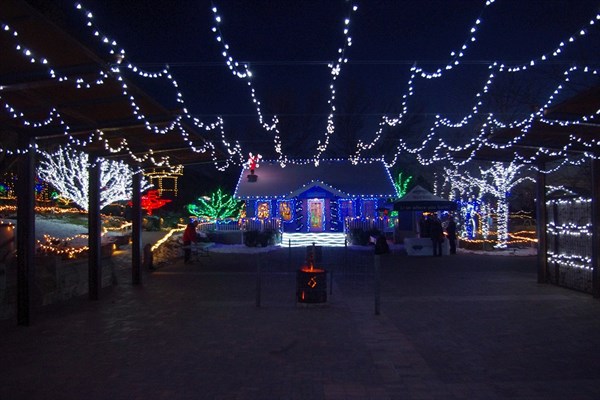
Are you tempted to turn your home into a Christmas grotto? Are you holding back because you’re worried about the electricity bill?
Some families love lighting displays on their roofs, trees, windows, garages, and on standalone items like light-up reindeer, snowmen, and Father Christmas.
These days, though, we’re all concerned about the impact on our bills and on the environment.
A display of thousands of lights with traditional lightbulbs can cost more than £170 to run for a month, the Energy Saving Trust has warned.
It says that powering kind of display can also produce enough carbon dioxide to fill 140 telephone boxes.
How can you save money on your outdoor Christmas lights display?
Swap your traditional, incandescent bulbs for strings of LED lights. They use up to 90% less energy than traditional light bulbs.
To replace a 60 watt bulbs, you need 6W LED lights. According to research by Comparethemarket.com, a single 60W incandescent bulb costs, on average, £26.65 to run for a year if left on for 10 hours a day at an average price of 12.2p per kilowatt hour – that’s 0.07p per day.
Replace that with an LED, and the average annual bill becomes £2.66 – or 0.007p per day.
Running 1,000 incandescent 60 watt lights for a 10-hour day would cost around 70p. Running 1,000 LED lights for that day would cost 7p.
Running 1,000 LED lights for the 12 days of Christmas for 10 hours a day would cost £1.10.
How much you’d pay depends on the wattage of your bulbs, how long you leave them on, and your tariff.
Across a large display, however, the decision to use LEDs could slash the cost of running your lights dramatically. It also cuts the impact on the planet in greenhouse gases.
Consider installing solar-powered lights for the garden displays, instead of powering them from your mains. They use photovoltaic panels to gather power during the day to keep your lights twinkling at night – with a zero running cost.
Does your electricity tariff give you cheaper energy at certain times? It’s worth checking before you decide on when your switch-on times should be.
You could also choose to limit the times you switch on to weekends or just a few nights a week.
Think about where you place your lights. You may not need as many to make an impact if you place them carefully.
How to save cash on your indoor display
Swap your incandescent tree lights for LEDs to cut the running cost.
If you’re worried about the bill, keep your strings of lights to your tree, or one place in your home. You can use reflective decorations to maximise their impact and hang other decorations like holly, ivy, baubles, or oranges studded with cloves in other parts of the room to make it feel festive.
Need help with your domestic lighting? Do you need an electrician in Cardiff? Check out our services here: http://www.sonikelectrical.co.uk/domestic-services/